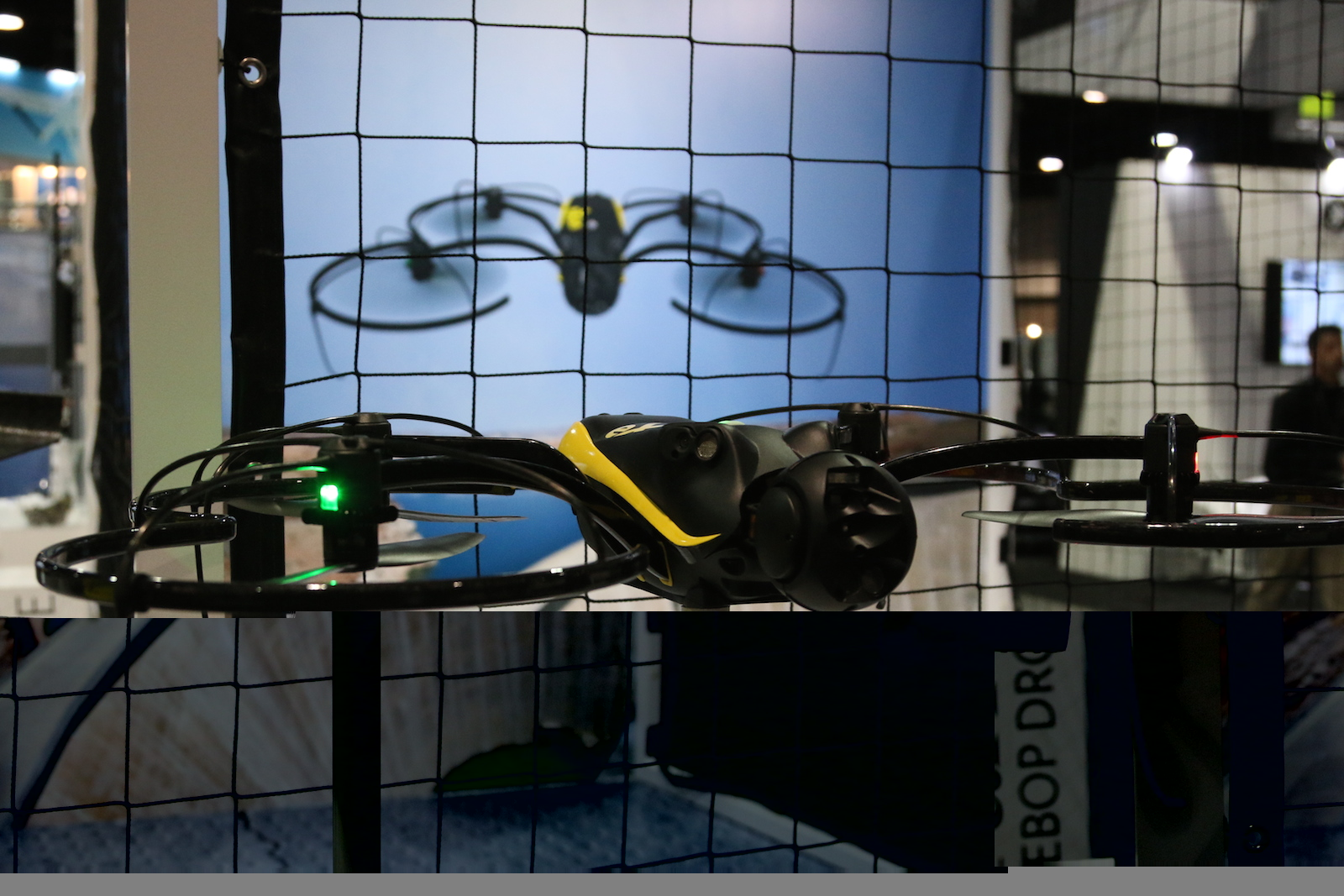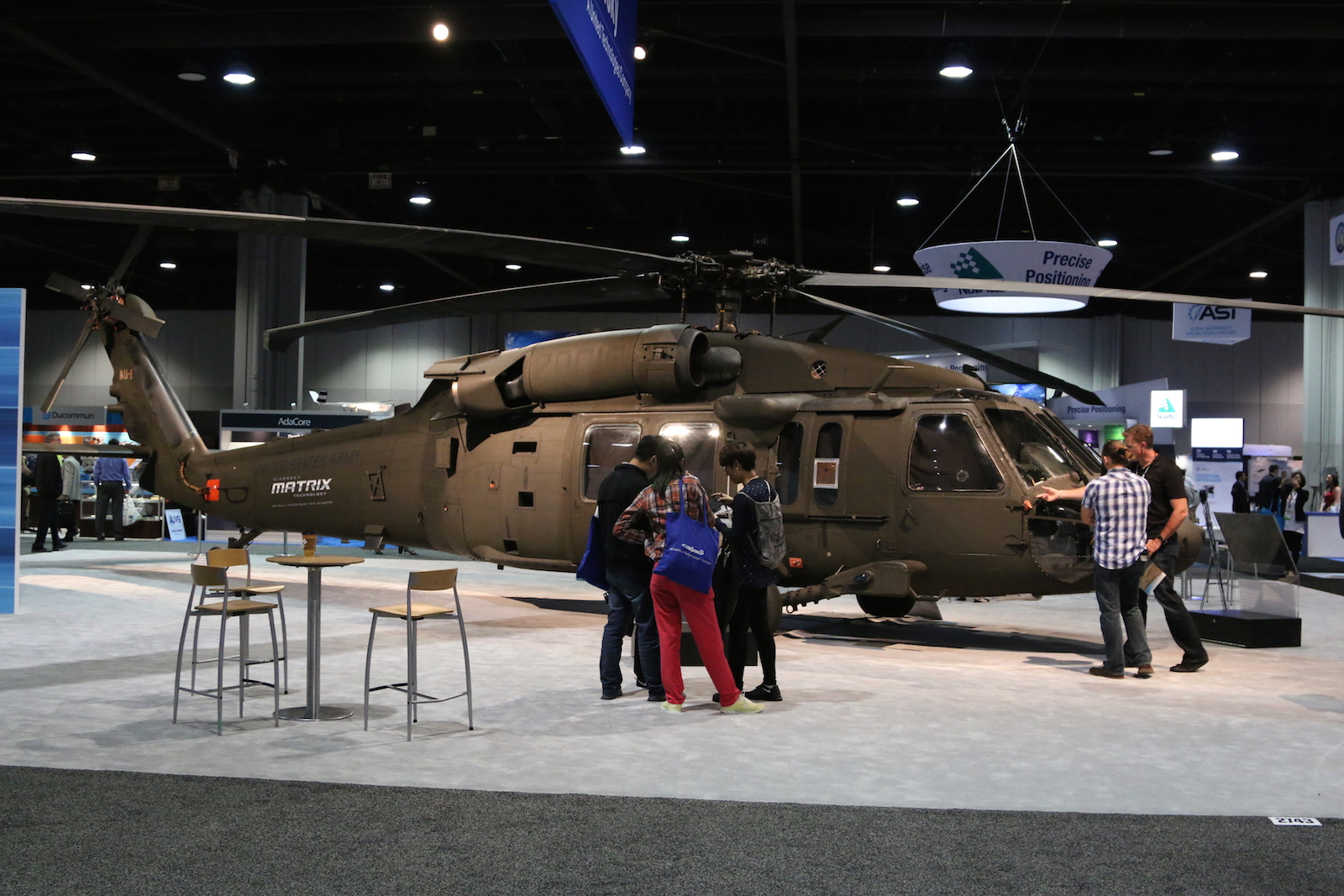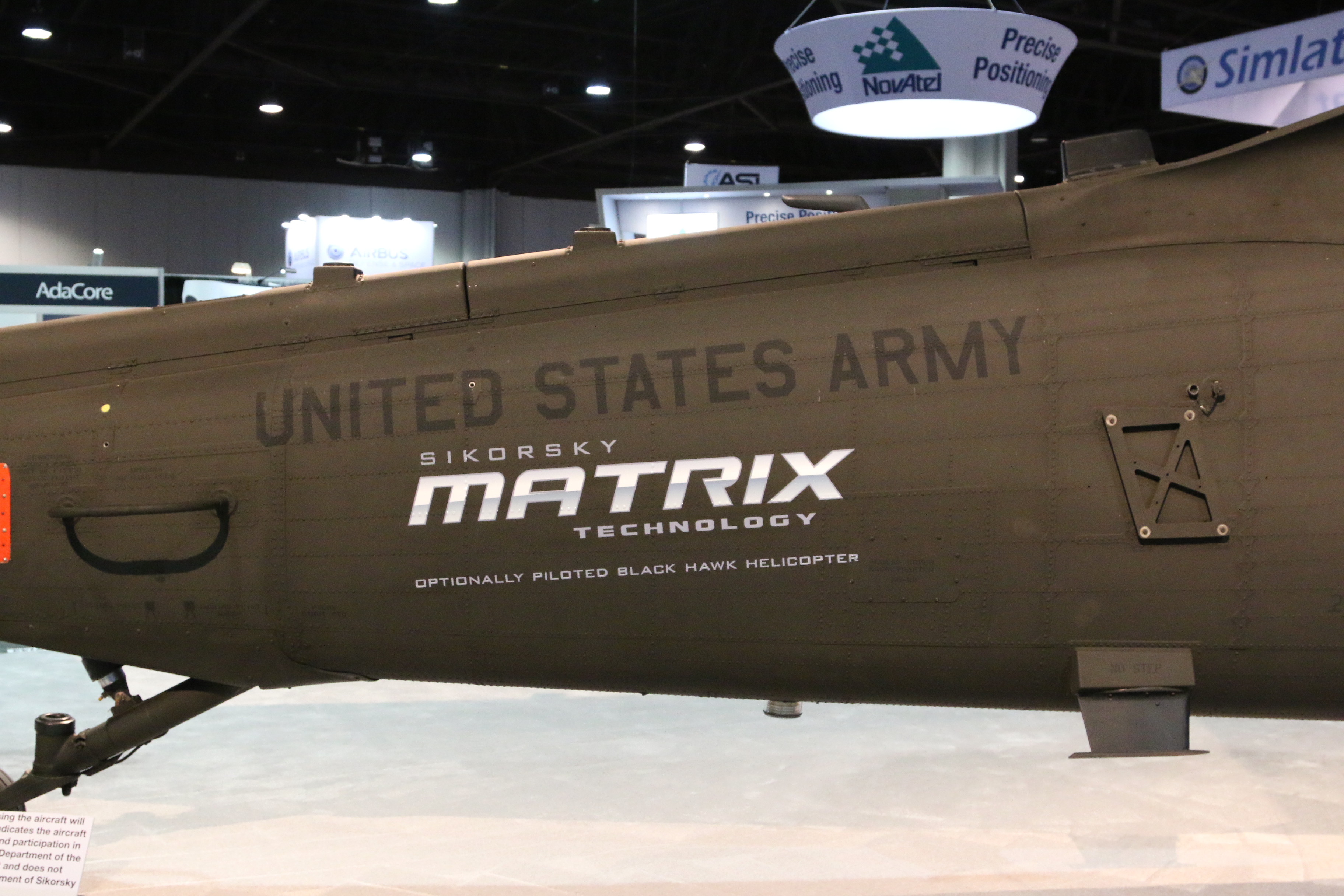By Arthur Holland Michel
From May 4 to May 7, the Association for Unmanned Vehicle Systems International (AUVSI) held its annual Unmanned Systems convention in Atlanta, Georgia. In any given year, Unmanned Systems is likely the largest gathering of drone technology in a single place by orders of magnitude. Hundreds of exhibitors, ranging from large defense contractors such as Northrop Grumman and Lockheed Martin to small DIY startups, show off their latest wares, all bidding to make space in a market that continues to grow at an exponential rate. Drones have only entered the broad public conversation in the last couple of years, but AUVSI, an industry association that advocates for, and lobbies on behalf of the unmanned systems industry, has existed for much longer. Once a niche organization primarily devoted to military contractors, AUVSI now plays an increasingly significant role in the civilian drone world, and thus in the lives of the general public.
AUVSI, a not-for-profit organization, traces its history back to 1972. During the Vietnam War, the U.S. had deployed a variety of unmanned aerial vehicles for surveillance and reconnaissance. In response to the growing interest in the technology, the unmanned aircraft industry created the National Association of Remotely Piloted Vehicles, which later because the Association for Unmanned Vehicle Systems (“International” was added in 1996).
AUVSI has become an influential player in domestic drone integration at a regulatory level.
Over the past three years, AUVSI has swung from primarily focusing on and supporting unmanned technology for military applications to dedicating much of its energy, at least in the public eye, to advocacy for the civilian, commercial sector of the industry.While defense spending is not set to grow significantly in the foreseeable future, industry entities—in part inspired by a much-cited AUVSI-sponsored study, “The Economic Impact of Unmanned Aircraft Systems Integration in the United States”—are working to take advantage of the civilian sector’s potential for growth. The study determined that the civilian drone industry in the U.S. alone would create up to 100,000 jobs and be worth as much as $82 billion by 2025. In recent years, the numbers of exhibitors, including large defense contractors, displaying civilian and commercial drones has grown noticeably. At the 2014 conference, which was held in Orlando, Florida, 76 percent of the roughly 8,000 attendees registered as having affiliations to the non-military sector, more than in previous years.
As the industry’s interest has expanded to include commercial drones, AUVSI has become an influential player in domestic drone integration at a regulatory level. In 2012, Congress passed the Federal Aviation Administration Modernization Act, which mandated that the FAA set regulations for the commercial use of unmanned aircraft in domestic airspace, opening the prospect of a potentially very large new market for the technology. As the federal government continues to work to develop regulations for drone use within the U.S., AUVSI is dedicating significant efforts to willing along the process.
AUVSI’s active presence in the domestic regulatory process was evident at Unmanned Systems 2015. The FAA made two significant announcements at the conference. First, Michael Huerta, the FAA’s Administrator, unveiled the Pathfinder Program, a major initiative to expand the commercial applications of drones. The program consists of partnerships with three organizations—CNN, drone maker PecisionHawk, and BNSF Railroad—to explore how drones might be further used for journalism, agriculture, and infrastructure inspection. In the announcement, the FAA indicated that it will explore the feasibility and safety of beyond visual line of sight (BVLOS) flights (that is, when the operator of the drone cannot directly see it with the naked eye, and instead relies on cameras on the drone). Previously, the FAA had said it would not permit BVLOS flights. Huerta also said that the Pathfinder program could expand to include other companies.
The relationship between the FAA and AUVSI over the past years has not always been a completely amicable one.
Later that day, the FAA unveiled B4U Fly, a smartphone app that allows drone users to determine whether it is safe to fly at their precise location. The app provides users with information about any local flight restrictions, interactive maps, and a flight planning feature.
The fact that the FAA chose Unmanned Systems 2015 to make these announcements reflects the centrality of AUVSI as a liaison between the federal government and the industry during the regulatory process. The relationship between the FAA and AUVSI over the past years has not always been a completely amicable one. In an exit interview with the Center for the Study of the Drone, former AUVSI President Michael Toscano offered a cautious critique of the federal government. “The FAA has not met any of the deadlines that were stated in the Modernization Act of February 14, 2012,” he said. “To their, I won’t say defense, but to their credit, is that they haven’t always had the resources to be able to do what they needed to do, because the task is a very daunting task.” AUVSI usually releases a press statement whenever the FAA makes a landmark decision. Sometimes the organization will congratulate the Administration if the decision is seen to benefit the industry; other times, these statements will urge the FAA to move more quickly, and do more to remove the barriers that are seen to be preventing the industry’s growth.
AUVSI itself made a significant announcement at Unmanned Systems 2015. It is going to rebrand its Unmanned Systems conference as “Xponential,” with the tag “An AUVSI Experience.” According to a press release, the new name “encapsulates the tremendous growth and innovation in the unmanned systems industry, as well as the broad societal benefits of the technology.” AUVSI has not released many details about what structural or substantive changes, if any, will accompany the rebranding.
One potentially significant difference is to do with the organization’s word choice. In a promotional video on the Xponential website, the narrator uses the word “drone,” a term that the organization has resisted vigorously. At AUVSI Unmanned Systems 2013, the WiFi password for reporters was DONTSAYDRONE (the industry prefers the term Unmanned Aerial System, or UAS). This shift in word choice may reflect an effort on the part of AUVSI to broaden its attendee base.
All photos by Dan Gettinger
For updates, news, and commentary, follow us on Twitter.
[includeme file=”tools/sympa/drones_sub.php”]







